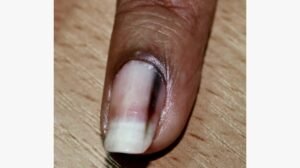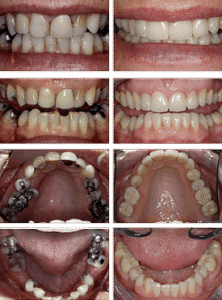Physical Therapy for a Pectoralis Major Tear
Recovering from a Pectoralis Major Tear with Physical Therapy
A pectoralis major tear can be a challenging injury, but with the right approach, recovery is achievable. Physical therapy (PT) plays a vital role in restoring strength, mobility, and function to your shoulder and chest. This guide explores how targeted PT strategies can help you heal from a torn or ruptured pectoralis muscle, whether or not surgery is required.
Understanding a Pectoralis Major Tear
The pectoralis major is a powerful muscle in your chest that aids in arm movement, particularly during pushing or lifting activities. A tear can occur due to overloading the muscle, such as during weightlifting, or from sudden trauma, like a fall on an outstretched arm. This injury can limit your ability to perform daily tasks, cause significant pain, and restrict arm mobility. Depending on the severity, treatment may involve surgery or conservative methods like immobilization and rehabilitation.
Surgical and Non-Surgical Treatment Options
Surgical Repair for Severe Tears
For complete or severe tears (grade III), surgical intervention is often necessary to reattach the torn pectoralis muscle to its insertion point on the upper arm. Post-surgery, you’ll typically wear a sling for 4–8 weeks to immobilize the shoulder and promote healing. Around 3–4 weeks after surgery, you may begin gentle range-of-motion (ROM) exercises, progressing to active movements by 6 weeks, depending on your surgeon’s guidance.
Non-Surgical Management for Partial Tears
For less severe tears (grade I or II), non-surgical treatment is often sufficient. A grade I tear involves overstretching the muscle or tendon, while a grade II tear is a partial tear. In these cases, a sling may be recommended for 4–8 weeks to stabilize the shoulder. Ice therapy can help manage pain and reduce swelling during this period. Apply an ice pack wrapped in a towel for 10–15 minutes several times daily, ensuring you avoid skin irritation or frostbite.
When to Begin Physical Therapy
The timeline for starting PT depends on the tear’s severity and whether surgery was performed:
- Grade I Tear: PT may begin approximately 7–10 days after the injury, focusing on gentle mobility exercises.
- Grade II Tear: Due to partial tendon damage, PT typically starts 3–4 weeks post-injury, allowing time for initial healing.
- Grade III Tear or Post-Surgery: For complete tears or surgical repairs, PT usually begins 2–6 weeks after the injury or procedure, based on your medical team’s recommendations.
Always consult your healthcare provider to determine the optimal time to start PT, as individual recovery timelines vary.
Physical Therapy Evaluation for a Pectoralis Tear
Your first PT session involves a comprehensive evaluation to assess your condition and establish a baseline for treatment. During this session, your physical therapist will:
- Discuss the details of your injury, including how it occurred and its impact on daily activities.
- Review your medical history and any prior treatments, such as surgery.
- Perform tests to evaluate:
- Palpation: To identify areas of tenderness or swelling.
- Range of Motion (ROM): To assess shoulder and arm mobility.
- Strength: To gauge muscle function in the chest and shoulder.
- Scar Tissue Mobility: If surgery was performed, to check incision healing.
- Functional Mobility: To understand how the injury affects your daily movements.
Based on this assessment, your therapist will collaborate with you to set realistic, challenging goals and develop a personalized rehab plan.
Physical Therapy Techniques for Recovery
Physical therapy for a pectoralis major tear incorporates a variety of techniques to reduce pain, improve mobility, and restore strength. These may include exercise programs, manual therapy, and modalities tailored to your needs.
Exercise-Based Rehabilitation
Exercise is the cornerstone of pec tear recovery, helping you regain ROM, strength, and functional arm use. Your PT will design a program that progresses gradually to avoid re-injury. Common exercises include:
- Range of Motion (ROM) Exercises: These improve shoulder and chest mobility. Early on, your therapist may perform passive ROM, moving your arm for you. As you progress, you’ll transition to active ROM, using tools like pulleys to enhance joint movement.
- Strengthening Exercises: These target the pectoralis muscle, rotator cuff, and shoulder. Initial exercises may involve isometrics, where you push against resistance without moving the joint. Later, you’ll incorporate resistance bands, free weights, or weight machines to build strength.
- Endurance Exercises: To improve muscular stamina, your PT may introduce equipment like an upper body ergometer (UBE) or rowing machine. These are typically used in later rehab stages to prepare you for demanding activities.
- Plyometric Exercises: For those returning to sports, plyometrics like throwing and catching weighted balls or using a plyo-back trampoline help restore explosive strength. These are introduced only when significant progress has been made.
Exercises should challenge you without causing pain. If you experience discomfort, consult your therapist to adjust your program.
Manual Therapy and Scar Tissue Management
If you’ve had surgery, your PT may perform scar tissue massage to improve the mobility of the surgical scar and surrounding tissues. This technique helps prevent stiffness and promotes flexible healing, though its impact on functional outcomes is still under study. Manual therapy may also include soft tissue mobilization to reduce tension in the chest and shoulder.
Heat and Ice Therapy
Your therapist may use heat to relax muscles and improve blood flow to the shoulder or ice to control swelling and pain, especially in the early stages of rehab. These modalities complement exercise and manual therapy to enhance recovery.
Setting Realistic Recovery Goals
Your PT will help you establish goals that are both ambitious and achievable. These may include regaining full shoulder ROM, restoring strength for daily tasks, or returning to sports. Your therapist will also provide an estimated recovery timeline and discuss what to expect, ensuring you stay motivated and informed throughout the process.
Tips for a Successful Recovery
- Follow Your PT Plan: Consistently perform your prescribed home exercises to reinforce clinic-based progress.
- Communicate with Your Therapist: Report any pain or discomfort during exercises to ensure your program remains safe and effective.
- Be Patient: Recovery from a pec tear takes time, especially for severe injuries or post-surgical cases. Progress gradually to avoid setbacks.
- Protect Your Skin During Ice Therapy: Always use a barrier, like a towel, to prevent frostbite when applying ice.
Returning to Normal Activities
With dedication to your PT program, you can expect to regain functional use of your arm and return to work, leisure, or sports activities. For athletes, advanced exercises like plyometrics will prepare you for high-intensity demands. Your therapist will guide you through each stage, ensuring a safe and effective transition back to your routine.
💡 Frequently Asked Questions
How in the direction of Correctly Ice an Problems Anytime Really should Actual physical Remedy Start off?
Answer coming soon. We are working on detailed responses to this common question.
What Does Kinesiology Tape Do?
Answer coming soon. We are working on detailed responses to this common question.
How Extended Ought to PT Just take?
Answer coming soon. We are working on detailed responses to this common question.
⭐ Expert Tips
- Include seasonal or trendy variations to keep your meals exciting.
- Highlight prep shortcuts or time-saving techniques for busy cooks.
- Consider dietary restrictions and include substitution suggestions.
✅ Key Takeaways
- These dinner ideas are perfect for impressing guests or enjoying special occasions.
- Choose recipes that match your skill level and available kitchen tools.
- Presentation and taste both contribute to a memorable dining experience.
📣 Join Our Community
Want more inspiration like this? Subscribe to our newsletter for weekly dinner ideas and cooking tips!

